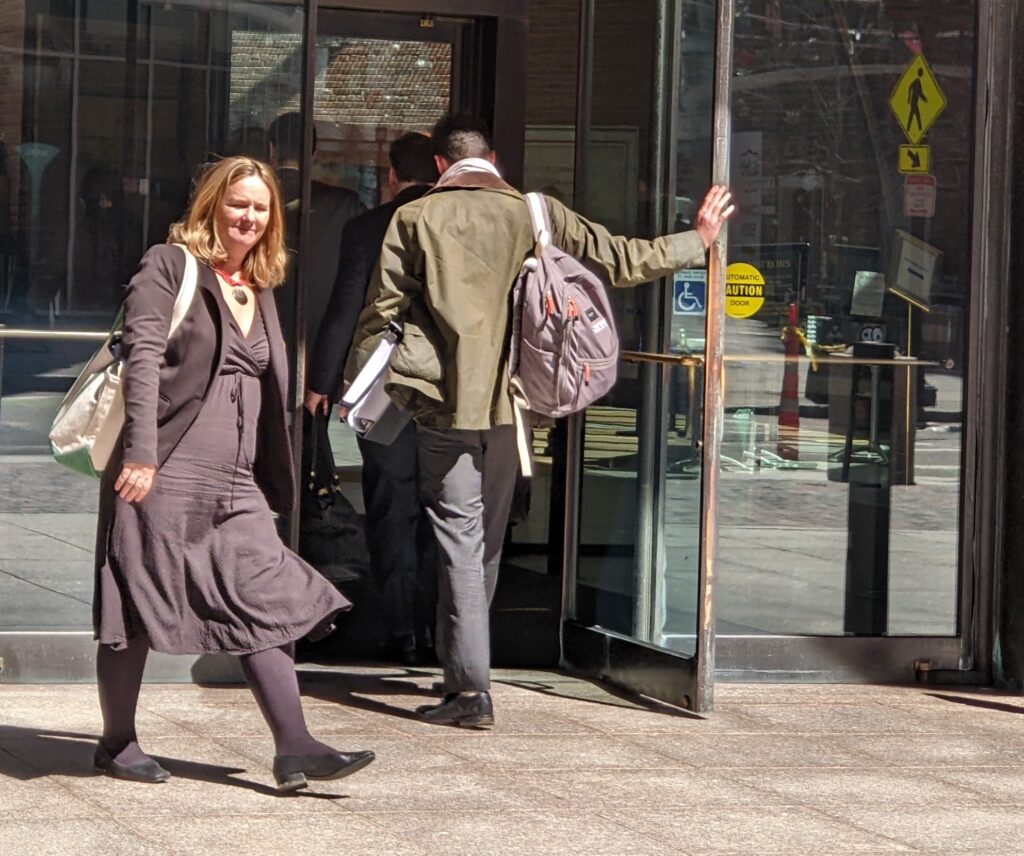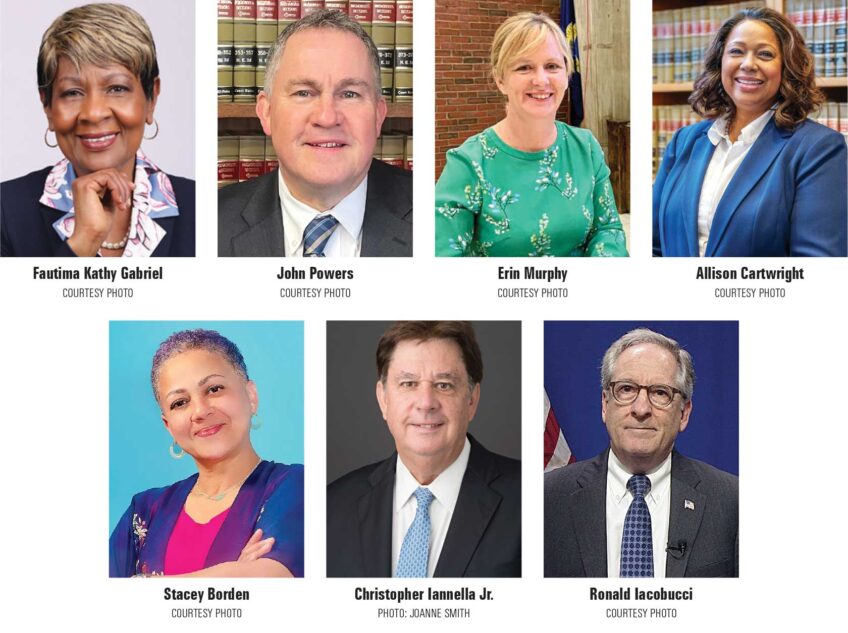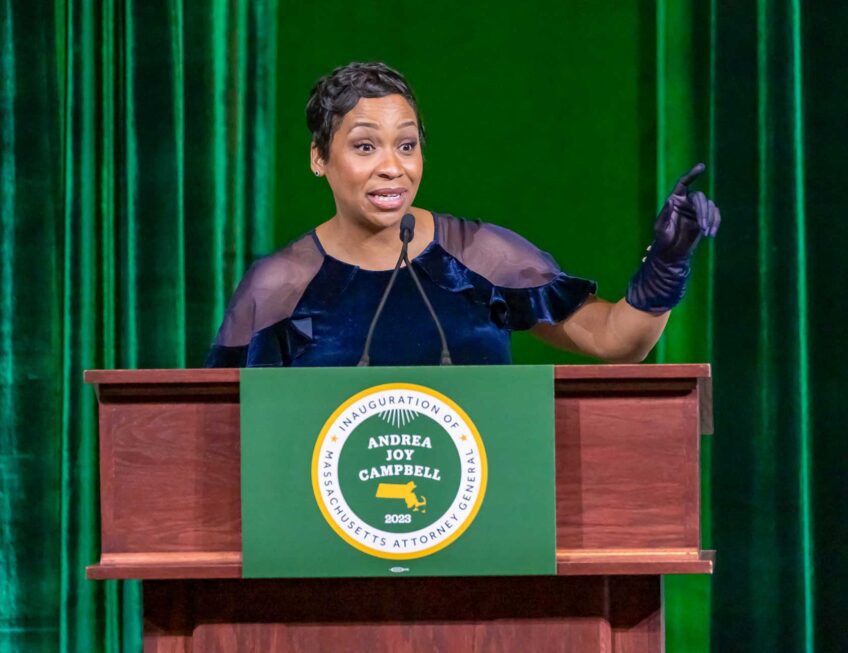
The named plaintiff in a lawsuit challenging the 2022 redistricting of Boston’s City Council districts was among several witnesses to take the stand last week as a U.S. District Court judge hears arguments in the case.
Rasheed Walters, a resident of Dorchester and a freelance columnist for the Boston Herald, testified that the new district maps approved by Council members last year deprive him of his voting rights because, he claimed, the maps improperly dilute the power of the Black vote in his district.
Walters’ testimony revolved around a key point of contention: the redistricting of several majority-white high-turnout precincts in Boston’s Cedar Grove and Adams Corner neighborhoods from the historically white District 3, which encompasses the eastern side of Dorchester, into District 4, the majority-Black district in Dorchester and Mattapan.
The plaintiffs allege the Council’s redistricting process violated the federal Voting Rights Act and the U.S. Constitution.
The arguments also highlighted a tension in the plaintiffs’ case. On the one hand, the plaintiffs argue that Councilors were improperly preoccupied with race and engaged in “racial balancing” in redrawing district lines. On the other, the plaintiffs’ own witnesses have repeatedly invoked race and racial voting patterns to argue that the new map approved by the Council harms Boston voters.
On the stand, Walters testified to his fear that moving those “super-voting” mostly-white precincts into the historically Black District 4 will serve to dilute the Black vote there.
“Taking those districts and putting them into a district that was supposed to be earmarked as an African American vote … you’re now diluting the political representation of African Americans. I feel that’s unfair, it’s a violation of my voting rights,” Walters said.
Before redistricting, District 4, currently represented by Brian Worrell, had a Black population of 51.6% — the largest concentration of Black voters in any district in Boston. Under the council’s new map, the Black population was reduced, by a half-percent, to 51.1%, still the largest concentration of Black voters in the city. The white population in the district has increased from 8% to 12%, as one heavily Vietnamese American district was shifted into District 3, represented by Frank Baker.
Walters argued that adding white voters to District 4 would imperil Black voters’ ability to elect a councilor that best represents them. District 4 has been represented by Black councilors —Charles Yancey, then Andrea Campbell and now Worrell — since the current nine-district system took effect in 1984.
“These super-voting districts will diminish the Black vote … I am not of the belief that a white or Irish American councilor could truly respond to the needs of African Americans,” Walters testified.
During cross-examination, Walters admitted that he is not an expert in voting patterns. Asked if he could present “any data or evidence to suggest that [Worrell] is in danger,” Walters answered, “No.”
Walters also acknowledged having written several op-eds for the Boston Herald condemning the redistricting process while it was ongoing, including one titled “Boston Redistricting Maneuver a Political Ploy” and another implying the process was being directed by a “shadow government.”
Witnesses for the plaintiffs, including white City Councilors Michael Flaherty and Erin Murphy and former City Councilor Maureen Feeney, have claimed throughout the hearing that Council members improperly went beyond their duty to ensure equal populations in each district and instead took it upon themselves to engage in “racial balancing.”
The plaintiffs are asking U.S. District Judge Patti Saris to grant a preliminary injunction to prevent the map approved by the Council from going into effect.
Initially, the lawsuit named Robert O’Shea, chairman of the Ward 6 Democratic Committee, as plaintiff. Later, O’Shea, who is white, was replaced as the named plaintiff by Walters, who is Black.
Plaintiff witness Feeney, who participated in the Council’s 2002 redistricting effort and who lives in one of the majority-white precincts that were moved from District 3 into District 4, testified that the new map would have a “devastating” effect on those neighborhoods; she said she was “concerned” that the change would threaten the ability of Black voters in District 4 to elect a representative of their choice.
“There are people who said to me, if this happens, I’m going to run. And I can tell you, they’re all white,” testified Feeney.
The redistricting process, Feeney said, “wasn’t about population-balancing, it was about race.”
But Feeney herself testified to having worked in 2002 “to create [another] majority-minority district” in District 3, and to having worked with former District 4 Councilor Charles Yancey to preserve the strength of the majority Black District 4, noting “I gave up two of my precincts to make sure we did nothing to weaken his district.”
Attorneys for the plaintiff played excerpts of redistricting working sessions in which various Council members openly discussed the racial implications of various proposed changes to the map.
In one, Councilor Liz Breadon, who chaired the Council committee on redistricting, says that “the whole idea is to increase diversity in District 4 and increase the opportunity in District 3.”
Testifying for the plaintiffs, at-large Councilor Murphy said Breadon’s remark was just one example of a pattern of in which “we’re not working on population, we’re working on racial demographics.”
Duty to balance population
Attorneys for the city have emphasized that, thanks to population changes, Boston’s districts had to be redrawn, and that Council members were simply doing their job in eventually hashing out a map that the body could and did pass.
During cross-examination, Murphy acknowledged that a “base map” that emerged early in the redistricting process had not fully solved the problem of mandatory population redistribution.
“The base map was just a proposal … did the Council have the legal authority to change its mind?” asked Judge Saris.
“Sure,” answered Murphy.
“And once you start moving people, you start a cascading process?” asked defense attorney Lon Povich.
“Yes,” said Murphy.
Despite claims by the plaintiffs that Councilors had intentionally sought to dilute the white vote in District 3, Murphy and other plaintiff witnesses acknowledged that the overall white population change in District 3 had been minimal to the point of being trivial — a decrease of less than 1%.
“At the end of the day, the white population [in District 3] remained basically the same?” Judge Saris asked Murphy.
“Yes,” said Murphy.
Did racial factors predominate?
Shawn Donahue, a clinical assistant professor of political science at the University of Buffalo, says redistricting lawsuits such as this one often revolve around not whether race was considered in the redistricting process, but to what degree and to what purpose.
“Where the [U.S. Supreme Court] came out was, if race is the predominant factor, then ‘strict scrutiny’ applies,” meaning such a redistricting process would be ripe for challenge, Donahue told the Banner. And race can be predominating in a redistricting process “in benefiting or burdening minority groups,” Donahue said, noting that evidence about what Council members said and how they deliberated as the maps were drawn could be relevant to the case.
“The question is going to be, do the plaintiffs have evidence that race predominated?” said Donahue.
But, he says, the facts that only small populations were redistricted, and that district boundaries remained relatively compact and contiguous, could play to the city’s argument that the Council did its job within the bounds of the law.
“It does sound like they have some race-neutral explanations for what they did,” said Donahue.
Defense arguments
On Monday, the sole witness for the defendant (the city of Boston) testified that the map eventually produced and passed by the Council did not raise red flags in terms of the kind of racial balancing the plaintiffs allege.
Moon Duchin, a Tufts mathematician and a national expert on redistricting, said on the stand that the final map reflects councilors’ adhering closely to the “core retention” of existing district boundaries.
Duchin testified that while it is “important to avoid racial targets,” she saw no evidence that had taken place in the final map.
“Signs that one uses to identify racial gerrymandering are not present in this map,” Duchin testified, adding that “District 4 remains quite effective for Black voters to determine their candidate of choice.”
Nor did the removal of super-voting precincts from District 3 affect the ability of voters in that district, of whatever race, to effectively elect their candidate of choice, said Duchin, who conducted an analysis of voting patterns in the city to make her determination.
“I didn’t see big changes in terms of who would get elected in any of the district,” she said. “I don’t see any evidence that the desire to change demographics predominated … How it turned out was very status quo.”




